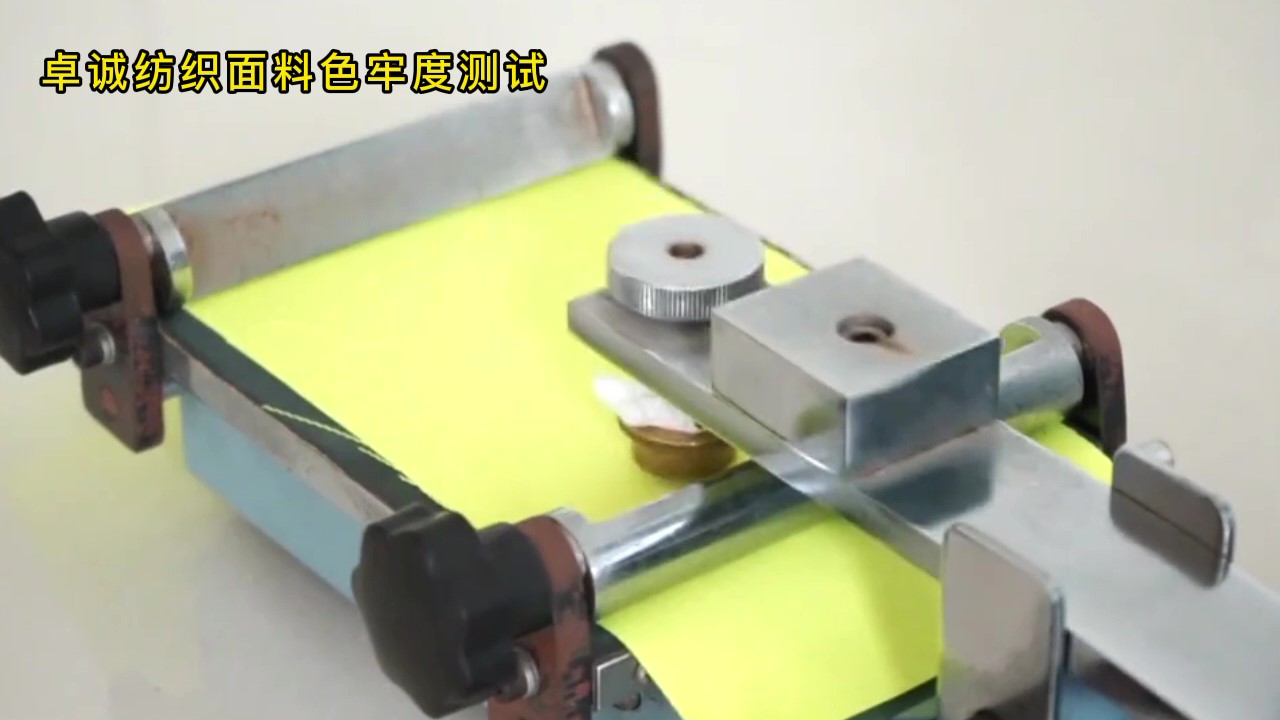Color fastness to rubbing of flame retardant fabrics
When people wear flame retardant clothing, the flame retardant fabric and the flame retardant lining will have friction; various splicing parts will also generate friction; when relying on objects, friction will also occur; these frictions are likely to be caused by the fabric. The color fastness to rubbing is not good enough, and the color transfer occurs, which affects the appearance of the flame retardant clothing. Therefore, the test of color fastness to rubbing is regarded as a basic technical requirement. The color fastness to rubbing is so important, what are the factors that affect the color fastness to rubbing?

Common standard for color fastness to rubbing
Chinese standard: GB/T 3920
International Standard: ISO 105 X12
American Standard: AATCC 8
Japanese Standard: JIS L0849 Type I /Type II
The color fastness to rubbing of flame retardant fabrics is divided into dry rubbing color fastness and wet rubbing color fastness.
The color fastness to rubbing is to rub the flame retardant fabric sample with a dry rubbing cloth and a wet rubbing cloth respectively to evaluate the staining degree of the rubbing cloth. Two sets of test conditions are provided by two optional sizes of friction heads: one for pile fabrics; one for single-color fabrics or large-area printed fabrics.
Factors affecting color fastness to rubbing:
a. Varieties of fabrics with poor color fastness to dry rubbing: rough surface or brushed fabrics, fleece fabrics, hard fabrics such as linen, flame-retardant denim fabrics, pigment-printed fabrics, dry rubbing causes dyes or other colored substances accumulated on the surface to grind down, or some colored fibers are broken to form colored particles, which reduces the degree of color fastness to dry rubbing; in addition, for sanded or raised fabrics, there is a certain angle between the fluff on the surface and the contact surface of the abrasive cloth, which is not parallel. , which increases the frictional resistance of the abrasive cloth, and also causes the color fastness to dry rubbing to decrease.
b. Cellulosic fiber fabrics are generally dyed with reactive dyes. There are two reasons why the dye on the test fabric will migrate to the abrasive cloth:
▲The water-soluble dyes are transferred to the abrasive cloth during wet rubbing. The reactive dyes and cellulose fibers are bound by covalent bonds. The type of this bond is very strong and will not be broken due to friction. Those dyes bound to cellulose fibers by van der Waals force (so-called floating color) will be transferred to the abrasive cloth under wet rubbing, resulting in poor wet rubbing fastness.
▲The dyed fibers are broken during rubbing, forming tiny colored fiber particles and transferring them to the abrasive cloth, resulting in poor color fastness to wet rubbing.
c. The color fastness to wet rubbing of reactive dyed fabrics has a lot to do with the depth of dyeing. When dyeing dark colors, the concentration of dyes used is higher, because excessive dyes cannot be combined with fibers and can only accumulate on the surface of fibers. It becomes a floating color, which seriously affects the color fastness of the fabric to wet rubbing. The degree of pretreatment of cellulose fiber fabric directly affects the color fastness to wet rubbing, mercerizing, singeing, scouring, bleaching and other pretreatments, which can make the fabric surface smooth, reduce friction resistance, and improve the color fastness to wet rubbing of the fabric.
d. For light and thin polyester fabrics, when dry friction is carried out, because the fabric is relatively loose, under the action of friction, the fabric will partially slip, which will increase the frictional resistance; but such fabrics are wet friction color. In the fastness test, because of the low water absorption of polyester, water plays a lubricating role during wet grinding, so in this case, the color fastness to wet rubbing of the fabric is better than the color fastness to dry rubbing. Some darker colors such as black, red or navy blue have a more pronounced effect. However, for corduroy fabrics, under wet conditions, due to the dyes and printing and dyeing processes used, the usual color fastness to wet rubbing is only about 2 grades, which is not better than the color fastness to dry rubbing.
e. The softener added in the post-finishing process plays a lubricating role, which can reduce the coefficient of friction and dye shedding. The cationic softener and anionic reactive dyes will react to form a lake, which reduces the solubility of the dye and improves the fabric. Wet rubbing fastness. Softeners with hydrophilic groups are not conducive to the improvement of wet rubbing fastness.



